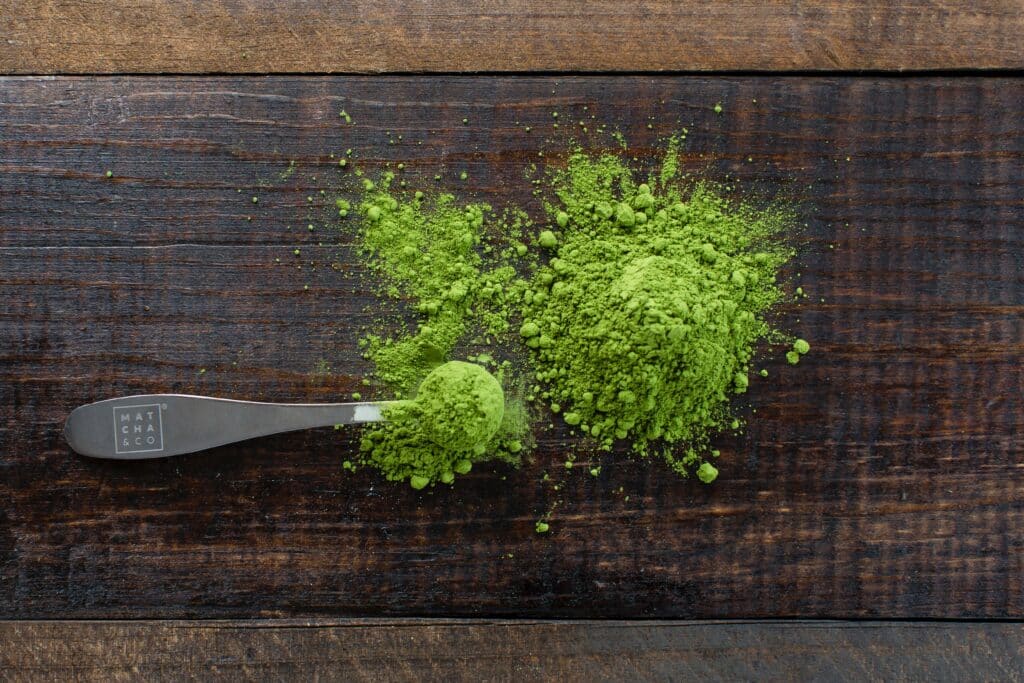History
Matcha, a staple in traditional Japanese tea ceremonies, has a rich history that dates back to the Tang Dynasty in China. During this era, tea leaves were steamed and formed into bricks for storage and trade. The tea was prepared by roasting and pulverizing the leaves, then mixing them with water and salt. This method eventually evolved into the creation of matcha in Japan during the 12th century, when Zen Buddhists introduced the practice of drinking powdered tea. The ceremonial preparation of matcha became an art form, symbolizing harmony, respect, purity, and tranquility.
In modern times, matcha has gained global popularity not only for its distinct flavor but also for its versatility in culinary applications. It is celebrated for its vibrant green color and rich, umami flavor, making it a unique ingredient in various dishes. Matcha’s uses extend beyond traditional tea; it has become a popular flavor in a range of sweet and savory recipes. Chefs and home cooks alike incorporate matcha into baked goods like cakes and cookies, as well as in making ice creams and smoothies. Matcha lattes have emerged as a trendy and healthier alternative to coffee, offering a smooth, creamy texture with a gentle, sustained energy boost without the jitters often associated with caffeine.
Health Benefits
The health benefits of matcha are vast, owing to its high concentration of antioxidants, particularly catechins. One of the most potent catechins in matcha is epigallocatechin gallate (EGCG), which is known for its cancer-fighting properties. Matcha also contains L-theanine, an amino acid that promotes relaxation and stress reduction while enhancing mood and alertness. This combination of caffeine and L-theanine in matcha provides a unique, synergistic effect, leading to a calm yet alert state, ideal for focused activities. Additionally, matcha is rich in vitamins and minerals, contributing to overall health and wellness. Regular consumption of matcha has been linked with improved heart health, weight management, and a reduced risk of several chronic diseases.

Ceremonial and culinary variations
The quality and grading of matcha are critical factors that significantly influence its taste, color, texture, and health benefits.
Ceremonial grade matcha represents the highest quality, used primarily in traditional Japanese tea ceremonies. This grade is made from the youngest, most tender tea leaves, carefully picked and stone-ground to a fine powder. The result is a vibrant green color, a fine, silky texture, and a delicate, sweet flavor with minimal bitterness. Due to its superior quality and the meticulous process involved in its production, ceremonial grade matcha is the most expensive and is best enjoyed whisked with hot water and consumed on its own.
Culinary grade matcha, on the other hand, is used for cooking and baking. It’s made from leaves that are slightly older and less tender than those used for ceremonial grade. This results in a slightly more robust flavor and a less vibrant green color. Culinary grade matcha is still a high-quality product but is more affordable and versatile, making it ideal for blending into lattes, smoothies, and for use in cooking and baking. Within the culinary grade, there are several subgrades which vary in quality and price, such as premium, cafe, ingredient, and kitchen grades. These are chosen based on the specific requirements of the recipe or preparation method.
The price of matcha is influenced by several factors, including the grade, origin, and processing methods. High-quality matcha, especially ceremonial grade from reputable regions in Japan, commands a premium price. The careful cultivation (such as shade-growing, which increases chlorophyll content), harvesting, and grinding processes all contribute to the cost. In contrast, lower-quality matcha, often labeled as ‘food grade’ or found in pre-mixed packets with sugar and milk powders, is less expensive but lacks the flavor profile and health benefits of higher grades. These lower grades often have a duller green color, a coarser texture, and a more astringent or bitter taste.
When purchasing matcha, it is crucial to consider the intended use – ceremonial grades for traditional drinking, and culinary grades for cooking and lattes. Reputable brands and sources should be sought out to ensure authenticity and quality, as the market also has counterfeit or substandard products.

